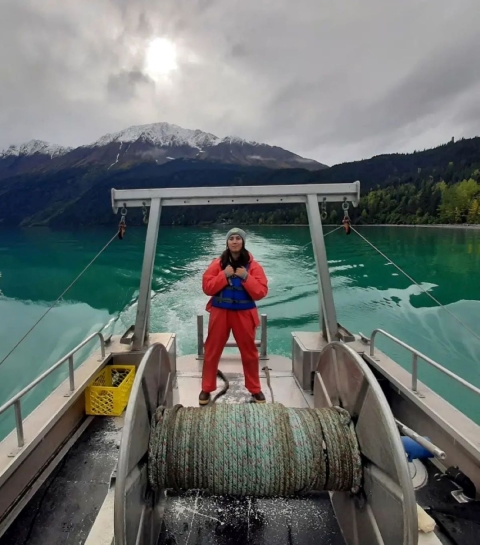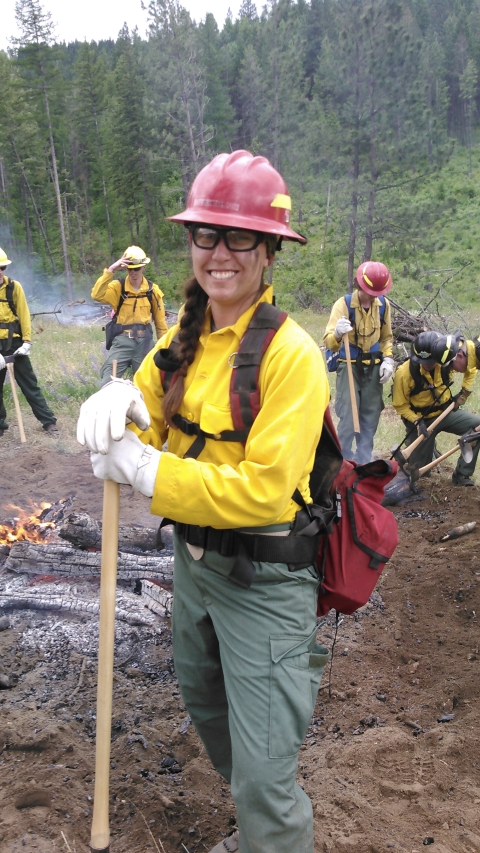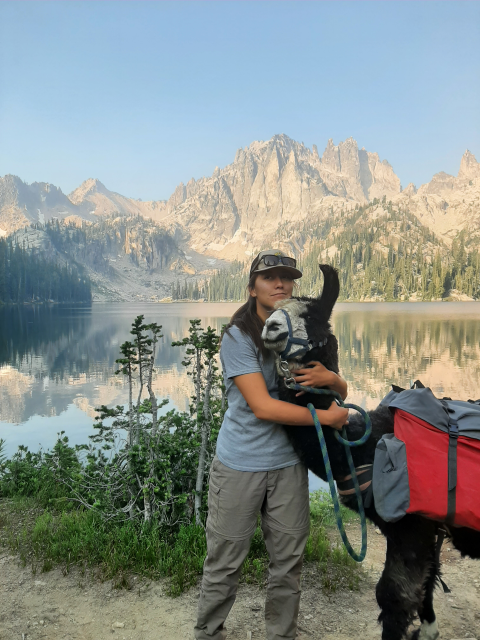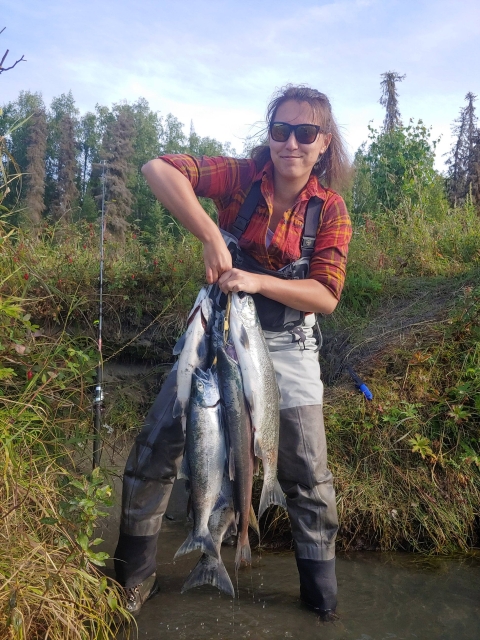Keala was born and raised in a small town in western Montana, where she spent her childhood exploring the Rocky Mountains. Without much to do in her rural community, she often found herself in the great outdoors: hiking, camping, fishing, backpacking, rafting, swimming, and skiing. Her passion for nature evolved to one of conservation during her first job as a Youth Conservation Corps crewmember at Lee Metcalf National Wildlife Refuge. From there, she decided to focus her life on the pursuit of natural resource conservation.
Keala began her journey in wildlife studies at the University of Idaho but quickly pivoted to fisheries after volunteering on a burbot (Lota lota) research project on the Kootenai River. She recalls the exact moment when the shift occurred:
“I remember floating down the river and thinking, ‘I could do this for a living?!’”
And so, Keala continued down the fishy path, earning her bachelor’s degree in fisheries resources. Along the way she joined the Doris Duke Conservation Scholars Program, an experimental conservation training program for undergrads interested in careers in conservation and the promotion of diversity, equity, and inclusion within the field of natural resources. Through the Doris Duke program, she learned the importance of representation in a field that was historically monocultural.
She gained further experience in the field of natural resources through seasonal positions — as a science tech for the Environmental Protection Agency, a hydrology tech and wildland firefighter for the U.S. Forest Service, a salmon tech for Idaho Fish and Game, and invasive species invasive species
An invasive species is any plant or animal that has spread or been introduced into a new area where they are, or could, cause harm to the environment, economy, or human, animal, or plant health. Their unwelcome presence can destroy ecosystems and cost millions of dollars.
Learn more about invasive species tech for Wyoming Game and Fish.
Keala continued her studies at Oregon State University where she pursued her master’s degree in fisheries science and joined the National Oceanic and Atmospheric Administration’s Living Marine Resources Cooperative Science Center while attending graduate school. This program focused on training graduate students from underrepresented communities in the sustainable harvest and conservation of our nation’s living marine resources. Her master’s thesis focused on Pacific lamprey (Entrosphenus tridentata) anatomical structures as records of their life histories.
After graduate school, Keala worked for Idaho Fish and Game as a lead on a bull trout (Salvelinus confluentus) distribution project within the Sawtooth Wilderness. In her last position, she worked as a research fishery biologist for Alaska Fish and Game where she studied sockeye salmon (Oncorhynchus nerka) within the Kenai, Kasilof, and Susitna River basins.
In her new role with the Service, Keala is working with partners to assist with salmonid recovery in Western Washington by providing technical assistance and monitoring. She is new to the Service and to Washington, but she looks forward to learning new things and exploring the area.
Keala and her breadth of experiences and perspectives are undoubtedly a great asset to her new team and the species and partners she works with. Welcome to the Service, Keala!
Learn more about the Western Washington Fish and Wildlife Conservation Office









